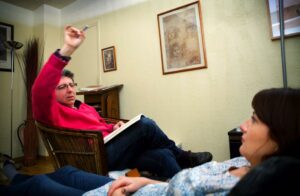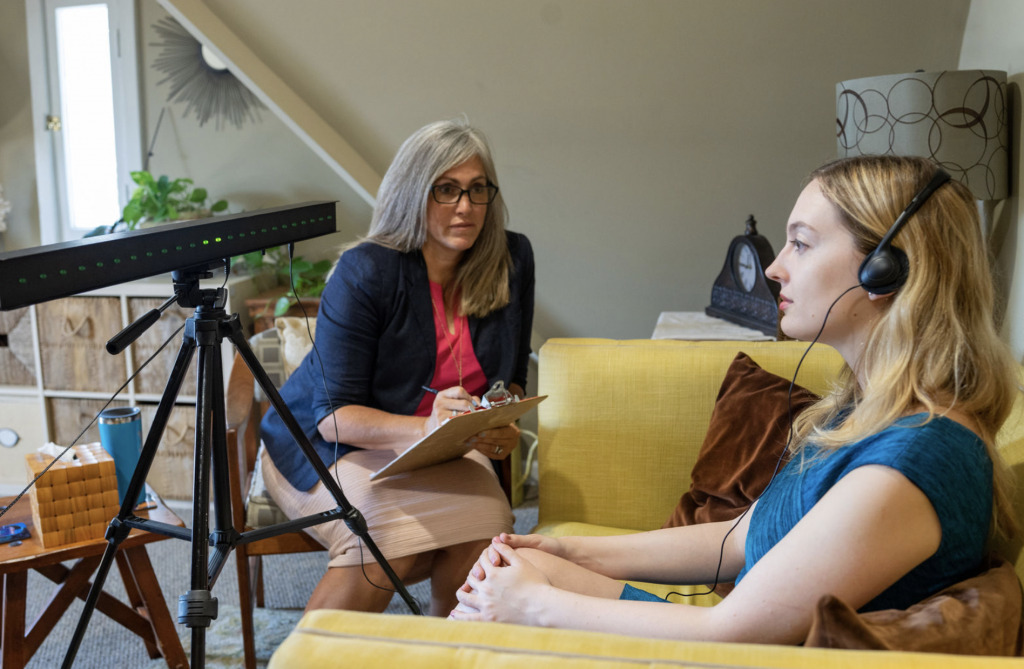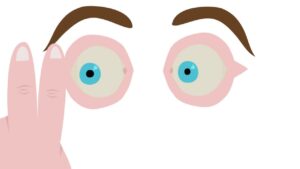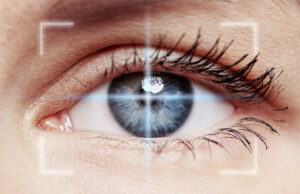Rapid Eye Movement Therapy, or RMT for short, is a type of treatment that uses light and sound to help people who are struggling with conditions such as insomnia, anxiety, and PTSD. In this article, we will be discussing the basics of RMT and how it works.
Contents
- 1 What is Rapid Eye Movement Therapy?
- 2 Types of Rapid Eye Movement Therapy
- 3 Benefits of Rapid Eye Movement Therapy
- 4 How Can Rapid Eye Movement Therapy Help People With Sleep Disorders?
- 5 How Does Rapid Eye Movement Therapy Work?
- 6 When to Use Rapid Eye Movement Therapy
- 7 Side Effects of Rapid Eye Movement Therapy
- 8 Price of Rapid Eye Movement Therapy
- 9 Conclusion
What is Rapid Eye Movement Therapy?

Rapid Eye Movement Therapy, or Rapid EMT, is a type of sleep therapy that uses repetitive eye movements to help patients fall asleep and stay asleep. Also, Rapid EMT is often used in combination with other sleep therapies, such as sleep counseling, to help patients achieve better sleep.
Rapid eye movement therapy, or REM sleep, is a type of sleep that is characterized by many rapid movements of the eyes. It is thought to be important for healing and refreshing the body. REM sleep is also associated with increased levels of creativity and memory.
There are several benefits to having more REM sleep. One advantage is that it can help you to feel more rested and refreshed the next day. REM sleep also helps to clear the mind, which can allow you to be more creative and problem-solve. It has also been shown to increase levels of happiness and satisfaction with life.
Types of Rapid Eye Movement Therapy
Rapid Eye Movement Therapy (REM) has been used for centuries to treat a variety of conditions. REM therapy is often used to treat insomnia, headaches, and stress. REM therapy is also popular for its effects on anxiety and depression. There are several types of REM therapy, including continuous wave sleep (CWS), stage-four sleep (S4), and rapid eye movement sleep deprivation (REST).
continuous wave sleep (CWS)
One of the main types of REM therapy, CWS is when a person sleeps in a continuous wave pattern. This type of therapy is often used to treat insomnia and can be done in several different ways, including using an alarm clock that cycles through different sleep stages or using a monitor that tracks the person’s movements.
stage-four sleep (S4)
Stage-four sleep is when a person falls asleep and stays asleep for several hours. In stage-four sleep, the brain is active and the person may have dreams. This type of REM therapy is often used to treat conditions like anxiety and depression and can be done in several different ways, including using medication or meditation.
Benefits of Rapid Eye Movement Therapy

Rapid Eye Movement Therapy, or Rapid Eye Movement Sleep Therapy, is a popular sleep method used to treat insomnia. It is a type of hypnotic therapy that uses quick movements of the eyes to help people fall asleep. rapid eye movement sleep therapy has many benefits, including reducing anxiety and stress levels, improving moods, and reducing symptoms of depression.
One of the main benefits of rapid eye movement sleep therapy is that it can help people fall asleep faster. Rapid Eye Movement Sleep Therapy usually takes less than 20 minutes to work, which is shorter than other types of sleep therapies. This means that it is easier for people to continue using the method if it works well for them.
Rapid Eye Movement Sleep Therapy also has other benefits like;
Improves Mood
One of the main benefits of REM sleep therapy for sleep disorders is that it can improve mood. People with REM sleep disorders often report feeling exhausted and overwhelmed during the day, which can lead to a decrease in productivity. With REM sleep therapy, these individuals can start to feel more alert and energetic during the day, which can improve their overall quality of life.
Improves Cognitive Functioning
REM sleep therapy also has a positive impact on cognitive functioning. People with REM sleep disorders often suffer from problems with concentration and memory, which can be significantly improved by receiving REM sleep therapy. By improving cognitive function, people with REM sleep disorders can regain some of the functionality lost as a result of their sleep disorder.
Reduces Risk of Dementia and Alzheimer’s Disease
Another benefit of REM sleep therapy for sleep disorders is that it can reduce the risk of dementia and Alzheimer’s disease. People with REM sleep disorders are more likely to develop these diseases than people with other types of sleep disorders, and REM sleep therapy has been shown to have a protective effect against these conditions.
Helps To Treat Other Sleep Disorders
REM sleep therapy is also beneficial for treating other sleep disorders. People with narcolepsy, for example, often experience problems with REM sleep, which REM sleep therapy can help to improve.REM sleep therapy can also be helpful for people with other types of sleep disorders, such as obstructive sleep apnea and restless leg syndrome.
How Can Rapid Eye Movement Therapy Help People With Sleep Disorders?
 Rapid Eye Movement Therapy, or REM sleep, is a type of sleep that is essential for humans. People who have difficulty sleeping may benefit from REM sleep therapy. REM sleep is important for the maintenance of memory and cognitive function. In addition, REM sleep helps to decrease stress levels and improve moods.
Rapid Eye Movement Therapy, or REM sleep, is a type of sleep that is essential for humans. People who have difficulty sleeping may benefit from REM sleep therapy. REM sleep is important for the maintenance of memory and cognitive function. In addition, REM sleep helps to decrease stress levels and improve moods.
REM sleep therapy is used to treat different types of sleep disorders. These disorders include narcolepsy, obstructive sleep apnea, restless leg syndrome, and post-traumatic stress disorder (PTSD). REM sleep therapy can help to improve the quality of these patients’ lives by improving their sleep habits and reducing their symptoms.
REM sleep is also important for the development of the brain and memory. It is during REM sleep that the brain consolidates memories and makes new connections between neurons. This process is critical for learning and development.
How Does Rapid Eye Movement Therapy Work?
Rapid Eye Movement Therapy, or REM therapy, is a sleep therapy that is used to treat certain disorders. REM therapy works by helping people to relax and fall asleep. It is usually used to treat conditions such as anxiety, depression, and post-traumatic stress disorder (PTSD).
The working of this therapy is
1. The therapist will attach a device to the patient’s head, which will emit flashes of light and sounds at a certain frequency.
2. The patient is instructed to close their eyes and focus on the stimulation.
3. As the therapist moves the device, the patient’s eyes will move back and forth at a rapid pace, which will stimulate their brain and help them fall asleep.
The therapy has several benefits, including the fact that it is affordable and does not require surgery or medication. It is also very effective at treating both primary and secondary sleep disorders. Additionally, it is easy to administer and has few side effects.
When to Use Rapid Eye Movement Therapy
Rapid Eye Movement Therapy, or REM for short, is a type of sleep therapy that is effective in treating a variety of conditions. You can use this therapy for different conditions like insomnia, anxiety, stress, and depression.
Insomnia
One of the most common issues that people struggle with is insomnia. REM therapy can help to improve the quality of your sleep and can help to relieve symptoms of insomnia.
Anxiety and Stress
Stress is one of the main causes of insomnia. REM therapy can help to reduce the amount of stress that you experience and can help to improve your sleep.
Depression
Depression is a condition that can cause a variety of problems, including difficulty sleeping. REM therapy can help to improve your mood and can help to relieve symptoms of depression.
Side Effects of Rapid Eye Movement Therapy

Rapid eye movement therapy, or RMT, is a type of sleep therapy that uses special goggles to help people relax their eyes and fall asleep. While RMT is generally considered safe, certain side effects can occur if it’s used incorrectly or in the wrong person.
Here are three of the most common side effects of RMT:
1. Blurred vision. If your eyes are constantly moving during sleep, they may end up with a blurry vision. This can be corrected with glasses or contacts, but it can also be a sign that the therapy is not working as intended and you should see a doctor.
2. Dry mouth. If you’re having trouble sleeping because of dry mouth, using RMT may not be the best solution. Drinking water regularly before bed and using mouthwash after eating can help reduce this side effect.
3. Headache. While headaches are common during any type of sleep therapy, they may be more likely to occur while using RMT due to the movements of the eyes and head. If you experience severe headaches, stop using RMT and see a doctor.
While there are some side effects associated with RMT, the majority of people find it to be safe and helpful in falling asleep. If you experience any side effects, stop using RMT and speak to your doctor.
Price of Rapid Eye Movement Therapy
There are a few things you need to know before you use RMT. First, it is important to understand the different types of treatments that are available. Second, you need to find a doctor who specializes in RMT. Finally, you need to be prepared to pay for the treatment.
The cost of RMT can vary greatly depending on the location and the type of treatment that is required. Some treatments, such as individual sessions or group sessions, can cost as little as $50 per session. Other treatments, such as intensive therapy or long-term care, can cost thousands of dollars per month.
The cost maybe also dependent on many factors thatyou may not be able to control, such as the severity of the disease or the type of treatment that is required.
Some of these are:
Your Problems
One of the main things that will affect the cost of RMT is the severity of your condition. The more severe the condition, the more treatments will be required. Additionally, the longer the treatment will take, the more expensive it will be.
Your Insurance
Another factor that will affect the cost of RMT is your insurance. Some insurance companies may cover certain types of RMT treatments, while others may not. It is important to speak with your insurance company to find out if this is the case for you.
Professional
Another factor that will affect the cost of RMT is the professional qualifications of the doctor who will be providing the treatment. If the doctor does not have a lot of experience treating RMT, the treatment may be more expensive.
Location
The location of the treatment also affects the cost. Some treatments, such as intensive therapy or long-term care, may require travel to a specialist location. This can add to the cost of the treatment.
Your Budget
Finally, one of the biggest factors that will affect the cost of RMT is your budget. If you can afford to pay for treatment, then you will likely be able to pay for a more expensive treatment option. However, if you cannot afford to pay for treatment, then you may be eligible for government-sponsored programs or private insurance plans that cover RMT.
Conclusion
Rapid Eye Movement Therapy, or RMT for short, is a treatment used to help relieve symptoms associated with various neurological disorders. RMT involves the use of light and sound to stimulate specific areas of the brain to improve function. This therapy is often effective in addressing conditions like anxiety, depression, and insomnia. If you are looking for an alternative treatment that can be administered in an outpatient setting, RMT might be right for you.
Hope this article was of help to you! If you are suffering from mental health disorders, you may seek help from Therapy Mantra. We have a team of highly trained and experienced therapists who can provide you with the tools and skills necessary for overcoming mental health disorders. Contact us today to schedule an online therapy or download our free Android or iOS app for more information.
If you are facing any eye problem you can also visit the best eye hospital or Charitable eye foundation we provide several services cataract surgery, Lasik surgery, Lasik surgery Delhi


